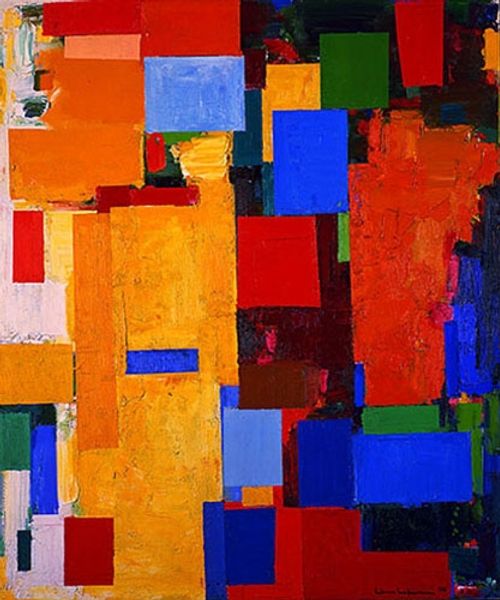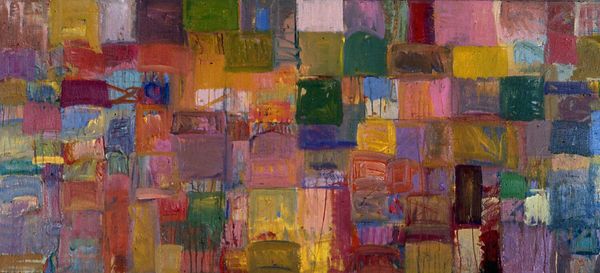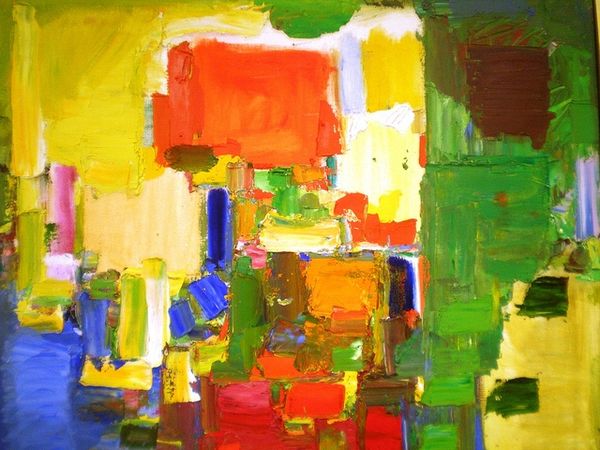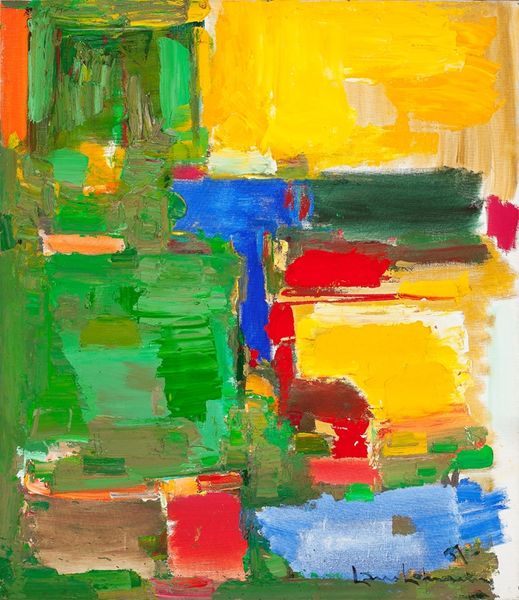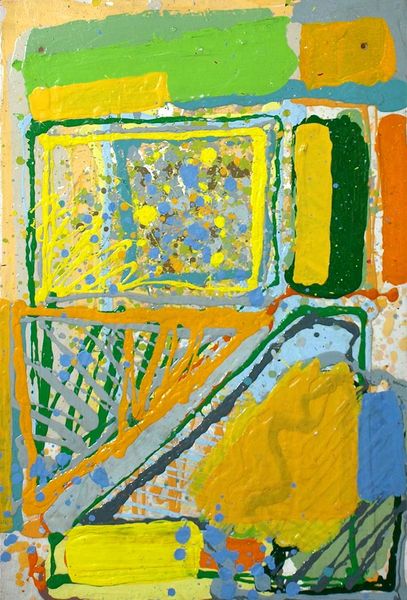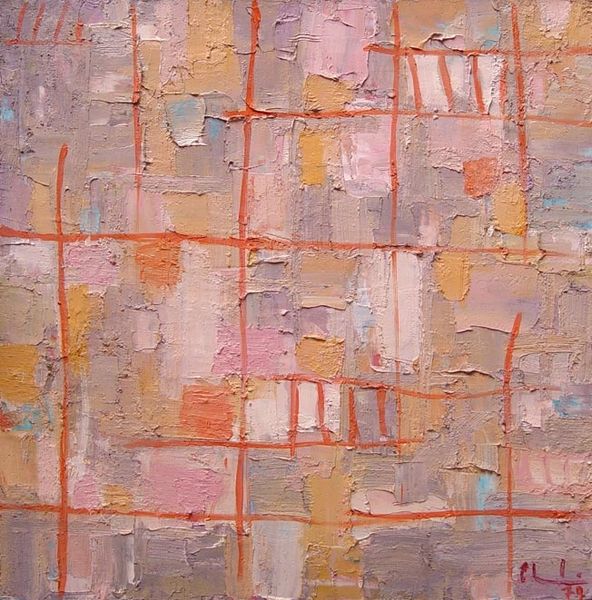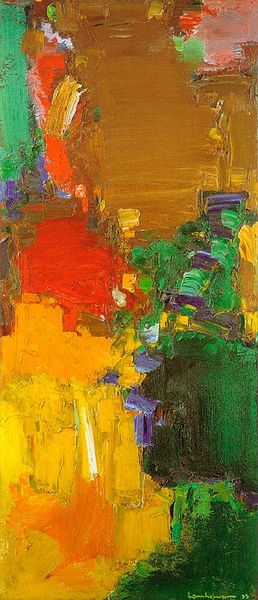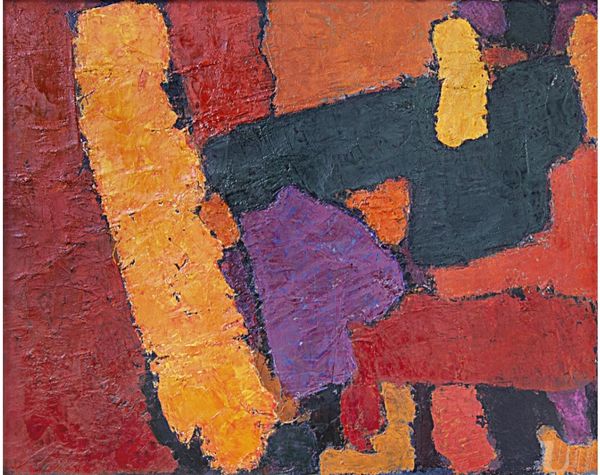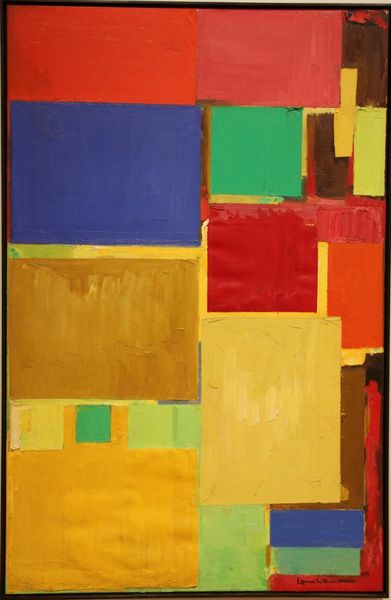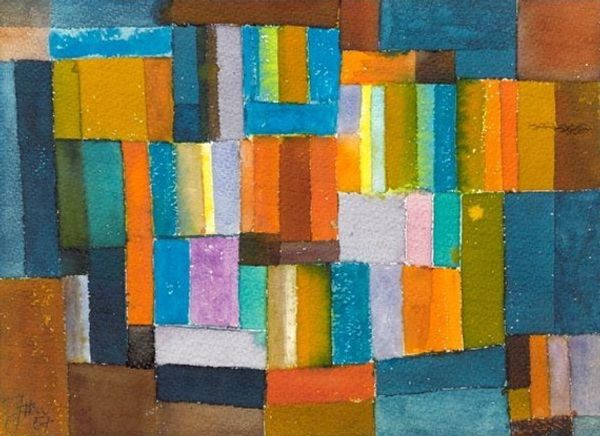
Dimensions: 182 x 81 cm
Copyright: Hans Hofmann,Fair Use
Editor: This is Hans Hofmann’s “Kaleidos” from 1958, an acrylic painting. The composition is essentially stacked rectangles and squares. I’m curious about the title because while “kaleidos” suggests fractured reflections, this feels more like an assertive construction. What do you make of it? Curator: It's fascinating how Hofmann uses geometric forms and color so boldly. Given your thoughts on the title, does this then remind you of a city plan perhaps, with the shapes suggesting buildings and roads? The colours evoke an emotive urban feel, wouldn't you agree? Editor: Yes, I can see the urban connection. The way the colors interact feels very Fauvist, creating a push-pull effect with depth and surface competing. There are those grounded, earthy hues right next to vibrant, almost jarring, colours. Curator: Absolutely! Now, think about this “push and pull” as Hofmann’s signature characteristic in Abstract Expressionism, as something deeply psychological: what could these visual dynamics reveal about post-war society, perhaps a sense of being pulled between tradition and the new? Editor: That’s interesting. Maybe the geometric forms represent a desire for order while the clashing colours express the anxieties and contradictions of the time. Curator: Precisely! Visual symbols evolve and carry new weight over time. So what started with colour can eventually convey a profound message regarding society. This definitely gives us a new perspective on what is otherwise considered abstract work. Editor: This reframing truly allows us to engage on a much more complex and compelling level. Curator: Indeed, there is so much more that symbolism has to offer when experiencing visual art and cultural artifacts.
Comments
No comments
Be the first to comment and join the conversation on the ultimate creative platform.
